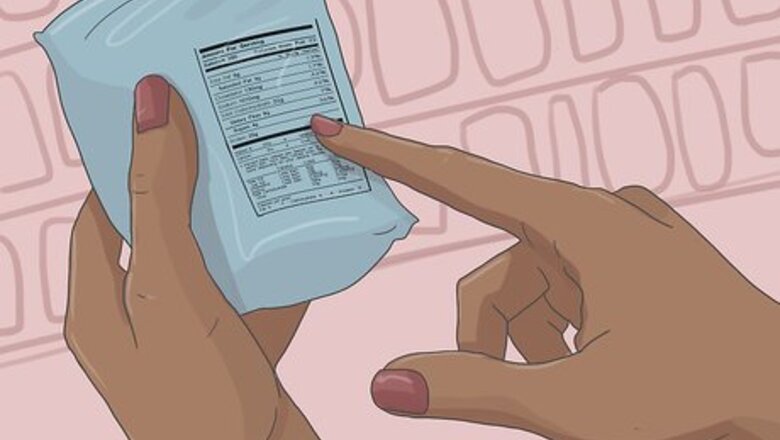
views
X
Expert Source
Amy ChowRegistered Dietitian
Expert Interview. 16 September 2020.
A nutrient-dense food will be high in healthy nutrients for your body, and relatively low in calories. To determine the nutrient density of foods, you’ll need to compare the nutrients offered per serving and weigh the information against the number of calories per serving.
Evaluating the Nutrient Density of Foods
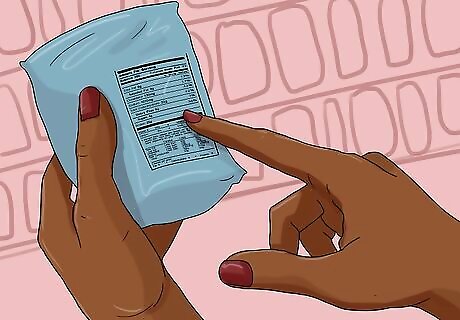
Read the nutrition labels on food you purchase. The nutrition label will give you plenty of useful information about the nutrients and calories that you’re putting into your body. You’ll want to look most closely at the number of calories-per-serving provided at the top of the nutrition label (should be right under “Amount Per Serving”) and the nutrients that the food provides. These healthy nutrients will be listed lower on the label and include Vitamin A, Vitamin C, Calcium, Iron, and others.
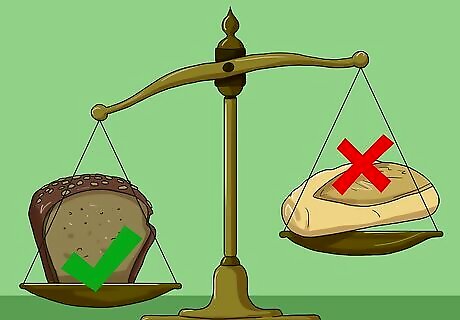
Compare the calories per serving with the daily percentage of nutrients. Adults generally consume about 2,000 calories over the course of a day. So, if a tablespoon of peanut butter contains 100 calories, that’s 5% of your daily caloric intake. However, if this peanut butter has only 1% of your daily recommended Vitamin A, then the peanut butter has low nutritional density (1% of a daily nutrient versus 5% of daily calories). You can use this tactic to compare foods against one another to determine which is more nutritionally dense. For example, imagine you’re comparing a whole grain bread (which has .25–.5 mg of Vitamin E) against a white bread (which has .1 mg of vitamin E). Both breads will contain roughly the same number of calories, but the whole grain bread will have much better nutrient density.
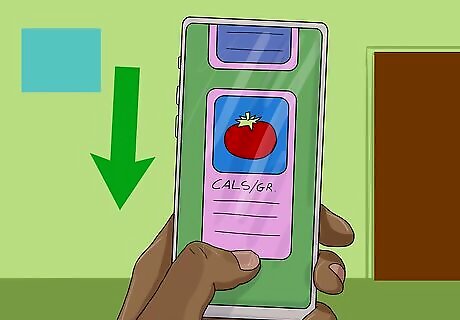
Consult an online nutrient density scale. There are various websites which have compiled information relating to of nutrient-dense food sources; these sites are run by nutritionists who have access to specific food-related nutrient data that typical consumers may find hard to come by. For information regarding nutrition density refer to DrAxe and PeerTrainer, among others. One of the more common means of measuring nutrient density is Dr. Joel Fuhrman’s nutrient density scale, which divides the nutrients in a food by its calories, and produces a value from 1–1,000 (indicating low to high nutrient density) on the Aggregate Nutrient Density Index (ANDI). Produce features heavily on the list: for example, kale and watercress each have 1,000 points, while soda and corn chips have a 1 and 7, respectively.
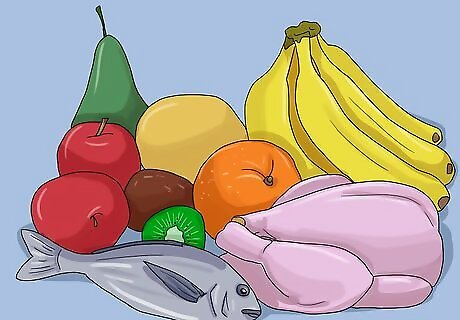
Look for whole foods when shopping. Whole foods are those that are sold, purchased, and consumed as close to their natural state as possible. Whole foods have undergone as little processing or refinement as possible, and have not had additional fats and flavorings added. This allows the foods to retain much of their nutritional value, and consequently, to have higher nutrient density than processed foods. The category of whole foods generally includes fruits and vegetables, grains, legumes, and even starchy foods (like potatoes) and proteins (like steak or chicken) when these are prepared without processing or deep frying. Whole-grain breads are an example of a nutrient-dense whole food, as their grains have not undergone the processing that other breads have. This bread is much healthier than regular white bread: although it contains roughly the same number of calories, it contains many more nutrients.
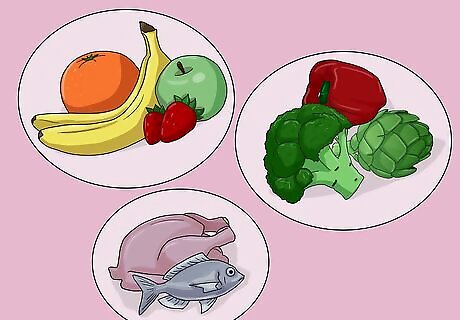
Consume a balance of nutrient-rich foods. When planning your diet around consuming foods with high nutrient density, keep in mind that it’s important to consume a variety of types of nutrients. Eat foods that will provide you with a healthy mix of nutrients each day; this will allow you to use one food to compensate for another’s nutrient deficiencies. Eating whole foods from various groups--grains, fruits, vegetables, and proteins--will help you maximize nutritional intake while minimizing calories. You may find yourself debating between foods with different nutritional strengths: for example, one which is high in vitamin A but low in vitamin D, and another which is high in vitamin C and iron. As a general rule, opt for foods with high levels of multiple nutrients. Also take calories into consideration: if a food offers a variety of nutrients but contains hundreds of calories, its nutrient density may actually be low.
Rejecting Foods with Low Nutrient Density
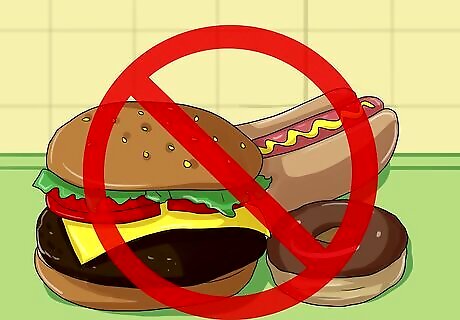
Avoid foods with high saturated fat content. Your body needs fat in moderation, but saturated fats are not a good option. Saturated fats have no nutritional value other than calories. Foods high in saturated fats have very low nutrient density. Choose fat-free foods when possible. This is not to say that all fat is unhealthy, but that cutting down on the fat content in foods will also reduce the caloric content, and consequently improve the ratio of nutrients to calories.
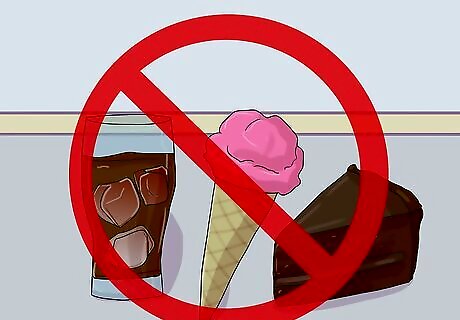
Avoid foods with high amounts of sodium and refined sugar. These substances have next to no nutritional value and only add unhealthy calories. This drastically lowers these foods’ nutritional density. Sugar-heavy, low-nutrient foods provide what are known as “empty calories”: calories without nutritional value. Soda and corn chips, for example, are among the foods with the lowest nutritional density. Processed foods are typically high in sodium and sugar, and generally have very low nutritional value and consequently low nutritional density.
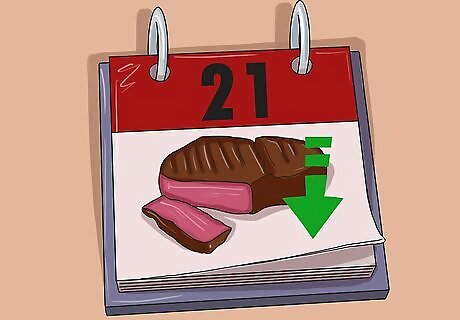
Eat meat sparingly. Meat products are high in protein (and consequently high in calories) and many are high in saturated fats as well. Consequently, curb your meat consumption whenever possible. Seafood like shrimp and salmon (and other fish) have a higher nutrient density than other meats. Red meats in particular, including beef and pork, contain saturated fats and are often high in calories. That said, consider eating red meat occasionally as a good source of protein, iron, and all essential amino acids. Since you’ll be cutting back on meat for the purposes of enhancing nutrient density, you’ll need to find other ways to consume complete proteins so that your overall nutrition doesn’t suffer. Focus on eating beans (kidney beans are relatively nutrient rich), squash, and other high-protein vegetables.
Eating Nutrient Dense Foods
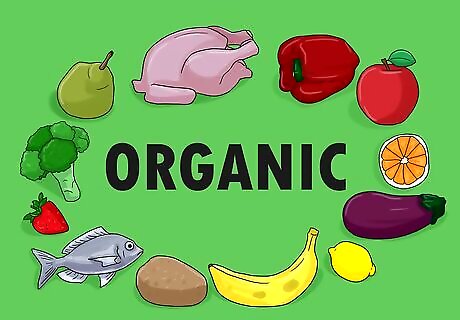
Build your diet around organic foods. These food items—primarily produce—will be high in nutrients, including vitamin C and vitamin D, and contain very few calories. Kale, collard greens, mustard greens, and watercress are among the most nutrient-dense foods available. Each of these foods has 1,000 on Fuhrman’s nutrient density scale. Organic produce also has other health benefits, in that it has not been treated with pesticides. These health benefits apply to more than just produce, and include meat.
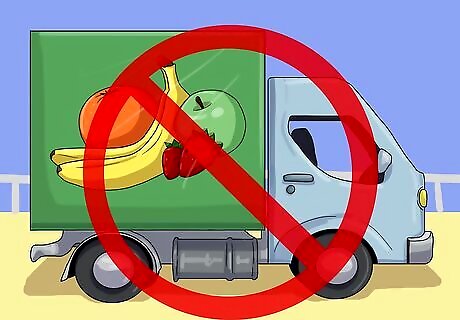
Buy locally grown produce items. In addition to purchasing and consuming organic food items, it’s important for nutrient density to purchase food that have been grown locally and have been freshly harvested. It takes time—often days or even a week—for produce to shipped between cities and across state lines, and the foods lose their nutritional richness during this time. However, locally grown and recently harvested foods will retain the majority of their nutrients. Organic foods are often among those shipped the greatest distances from their place of harvest to the place they’re sold. Before you purchase organic food in a grocery store, check the label: if it’s been imported from several states away, look for a more local option. A farmer’s market is a great location to find both organic and locally grown produce.
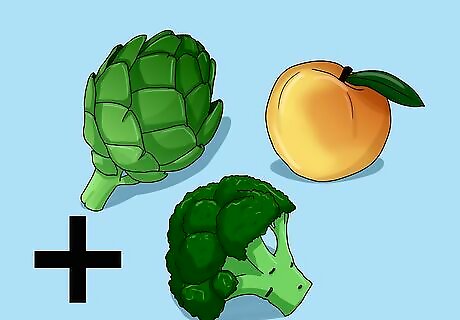
Include other nutrition-heavy, calorie-light fruits and vegetables. The majority of nutrient-dense foods are produce and fruits, since these are packed with nutrients and have relatively few calories. Plan to incorporate as many of these into your diet as possible. Other nutrient-dense produce includes leafy greens (especially spinach and romaine lettuce), broccoli, artichokes, and cabbage. Fruits tend to be more sweet and slightly higher in calories, and consequently have lower nutrient densities. However, fruits like strawberries, apples, peaches, and blueberries are still relatively dense nutritionally.

















Comments
0 comment